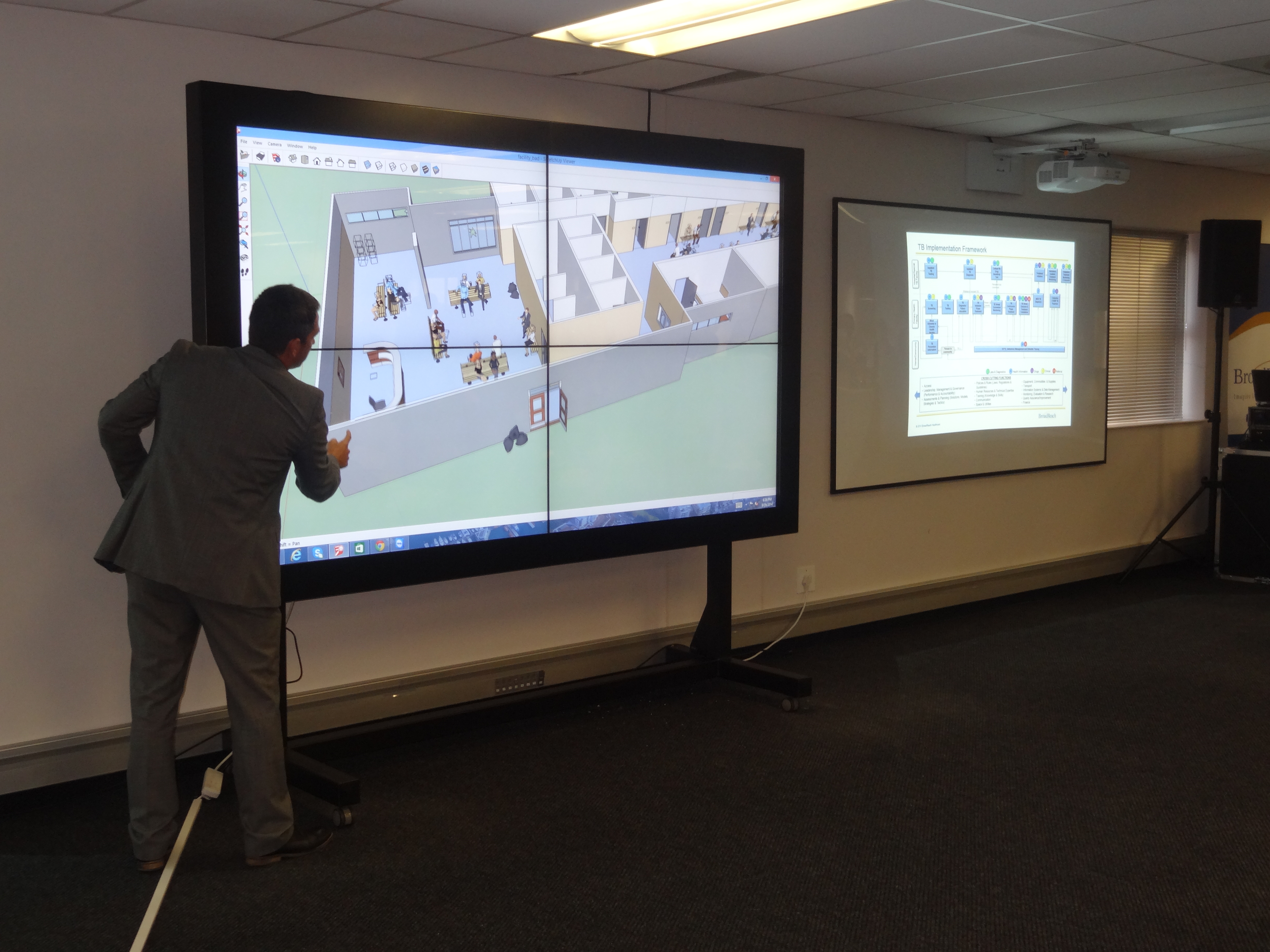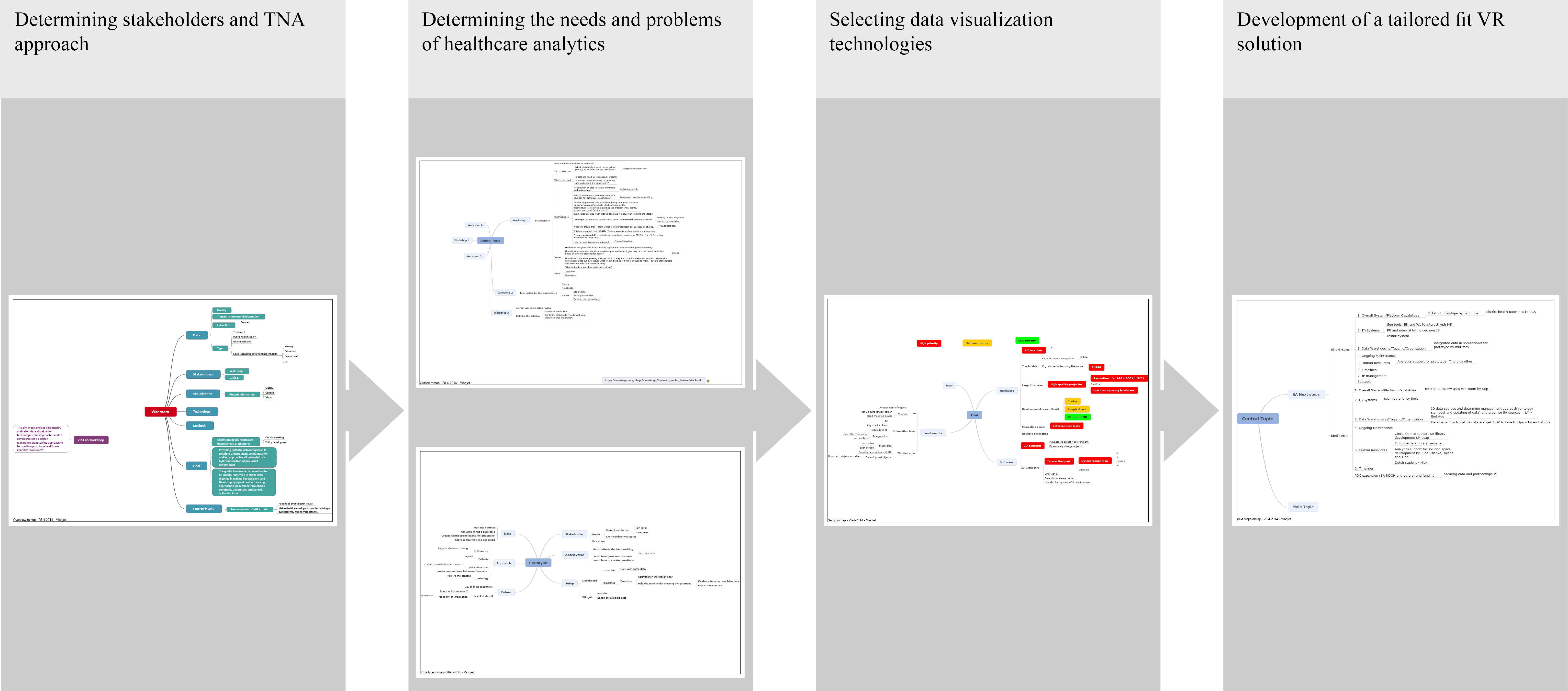Title : Design of a Healthcare Analytics War Room to support healthcare data visualization for better problem solving and decision making
Project Lead : Roy Damgrave From : University of Twente (None)
Dates : from 2014-03-21 11:28:55 to 2015-02-10 14:05:13
Description :
Motivation and objectives :
Progress in the field of public healthcare is highly dependent on the availability of quality data. The ability to transform that quality data into useful information and then present that information clearly, concisely and in a visual way to a wide range of critical stakeholders, for decision making and policy development, is key to any significant public healthcare improvement programme. Furthermore, data related to public health needs to be extracted from a variety of sources. While the majority of treatment and public health supply side data can be harvested from public health data systems, community level (demand side) data and data describing the socio-economic determinants of health (poverty levels, education, environmental factors etc.) are highly dispersed. Currently, national departments of health (especially in developing countries) as well as global health organizations and funders do not have a single view of critical data, relating to on public health issues. This makes decision making and problem solving a cumbersome, hit and miss activity. The Healthcare Analytics war room aims to address this issue by providing both the data integration IT solutions and problem solving/decision making approaches all presented in a highly interactive, highly visual environment. The goal is to allow decision makers to be visually immersed in all the data required in making key decisions and then to apply a joint problem solving approach to guide them through to a commonly understood and agreed, optimal solution. The aim of this project is to identify and select data visualization technologies and approaches and to develop/select a decision making/problem solving approach to be used in a prototype healthcare analytics war room. The objectives of this project are to: Determine various stakeholders requirements with respect to data and visual representation of that data Identify optimal data organization & tagging and structure/hierarchy approaches Select different data visualization techniques Test different visual problem solving technologies Finalise a decision making/problem solving approach using disparate data sets and different visualization technologies
Teams :
BroadReach Analytics: Team focused on improving access to healthcare by providing services and specific analytics products to policy makers, donors, governments and industry to guide more effective investments, policies, and on-the-ground interventions.
Dates :
starting date : 28 April, 2014
ending date : 30 December, 2014
Facilities descriptions :
http://visionair-browser.g-scop.grenoble-inp.fr/visionair/Browser/Catalogs/VR-LAB.NL.html
Recordings & Results :
In this TNA, first the problems and requirement of all stakeholders are depicted. Starting from this a composition of VR tools that should form an adequate VR solution is proposed. This VR solution becomes part of the workflow of Broadreach Healthcare to communicate health care analytics more effectively and efficiently, but foremost easier, faster and more dynamic more dynamic. This project is performed as a transnational access within the VISIONAIR project.
Conclusions :
The combination of BRHC and the University of Twente in this TNA has resulted in a workable blueprint for the development and realisation of the Health Command Centre (HCC). The used approach was based on existing data and knowledge where BRHC already has been working on for over a decade, in combination with the process of developing a Synthetic Environment that is constantly evolving in the VR lab. The problem-based approach has resulted initially into a workable list of requirements and needs for the HCC. This overview made it possible to convert and translate this theory into a workable and effective creation of the physical HCC. The development of the HCC will be an ongoing process for the coming years, and the experience of this TNA will also improve the processes used in the VR-lab for future projects
Project Images :



.

VISIONAIR / Grenoble INP / 46 avenue Felix Viallet / F-38 031 Grenoble cedex 1 / FRANCE
Project funded by the European Commission under grant agreement 262044

Project funded by the European Commission under grant agreement 262044
